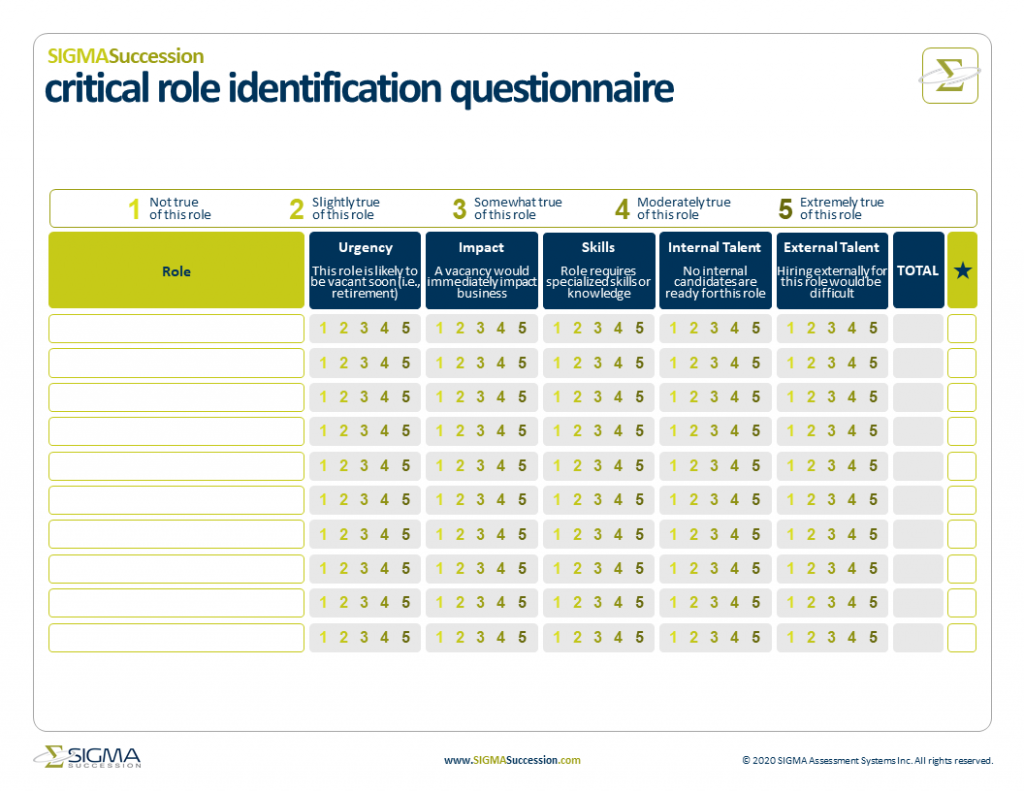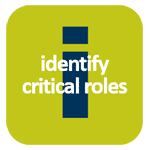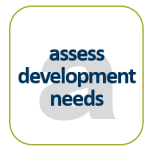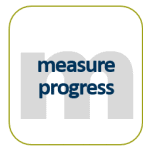How to Identify Your Organization’s Critical Roles
Identify Critical Roles in Your Organization
One of the first steps towards building a robust succession plan is to identify which roles in your organization should be involved in the succession planning process. To do this, you will need to decide which positions are critical to the success of your organization. The Critical Roles Identification Questionnaire is a succession planning template that will help you to identify those key roles that your organization should target in your succession program.

How to Start Succession Planning
Succession planning provides organizations with a roadmap to ensure the continuity of operations when changes occur. A proper succession planning process provides time to develop the future leaders’ knowledge and skills, so that they are prepared when the time comes to step into their new roles.
The first step in creating a succession plan is to identify which key positions should be included in the plan. Essentially, leaders need to identify which roles would have the greatest impact on the company’s performance, and would also be the most difficult to replace. Consider factors like leadership responsibilities, specialized skills, and strategic importance of the role. Selecting the right key positions to focus on is important to the successful outcome of your plan.
Our succession planning template available in this free download will walk you through what is required at each stage of the succession process, along with some really helpful tips to get you started. Inside you’ll find functional templates and tools to help you along every stage of your succession planning process, including measuring the maturity of your current process, determining where to focus limited resources, defining what is required for success at each role, identifying those succession candidates, building and measuring your talent bench, documenting development needs, tracking progress and identifying those really important development opportunities, and finally, measuring and communicating the success of your process which we think is really the most important part of the processes, is closing that loop. Hopefully this template helps you develop and get started on your succession planning process.
If you need help getting started, take a moment to check out our “Succession Planning Launch Series” which offers a simple and cost-effective way to build a robust process and ensure your organization’s leadership is positioned for success and prepared for the unknown. Contact us to learn more about our Succession Planning Launch Series that delivers a custom succession plan in just 30 days, while requiring less than eight hours, essentially two half-day sessions, from your leadership team.
Benefits of Identifying Critical Roles
Identifying critical roles is the first step in the succession planning process. Every subsequent step depends on identifying critical roles well. In addition to ensuring the remainder of the succession planning process is aligned with the needs of the organization, other benefits of identifying critical roles include helping you to:
- Prioritize your succession planning process
- Prioritize employee development efforts
- Understand your company’s operations
- Think strategically about who is on your team and why
- Identify roles that have a strong impact on your business
- Identify roles that have a unique skill or knowledge base
- See trends in external and internal candidate availability
- Establish a summary of critical people and positions in your organization
Deciding Which Roles to Include in Succession Planning
One of the common questions our consultants receive when helping leaders plan for succession is, “How do you decide which positions are critical?”
The Critical Roles Identification Questionnaire walks you through the process of answering that question. The questionnaire asks leaders to list all the roles in their company that are important to operations. While you are likely to list your C-suite leaders and senior managers first, it’s also important to take a step back and look beyond management. Are there any lynchpin roles at other levels – for example, among administrative staff or IT? Look across departments and down the organizational chart to ensure you are not missing individuals in different areas of the business, or at different reporting levels. Be sure to consider both essential people and essential roles to target when creating your succession plan. If you’re not sure about a role, include it for now. The template will walk you through the process of narrowing down which positions are truly critical.
Identifying Critical Roles for Succession
Once you have identified all potential critical roles, the next step in the succession planning process is to rate each role on the following five criteria:
- Urgency of succession: How soon is the position expected to be vacant?
In the context of succession planning, urgency refers to how likely it is that a role is going to be vacant soon. Based on past conversations and eligibility to retire, indicate how quickly you anticipate needing to fill the role. Roles where the incumbent is planning to stay for more than five years should be considered low urgency. Roles where the incumbent is planning to leave within three years should be considered urgent. Be sure to take into consideration that an employee may also be offered or look opportunities elsewhere. - Impact on business operations: How would day-to-day operations or business revenue be affected if this role was suddenly vacant?
On this questionnaire, ‘impact’ refers to the extent to which a vacancy would affect your organization. Positions that play a central role in core business functions or revenue generation should be considered critical. Impactful roles are those which allow businesses to operate as usual. In other words, they are gatekeepers, task completers, and decision-makers. Impactful roles might not always be the most obvious ones, so make sure you take time to consider whether an overlooked position lower down in the organizational hierarchy might really be a critical point of support. - Unique skillset or knowledge base: Does this role require skills or knowledge that would be difficult to replace, or demand specific experience in your company or industry?
Consider whether the roles you listed require any specialized skills or knowledge. Evaluate not only the skills needed to be qualified for the role, but also the institutional knowledge that is needed to be successful in this role. Understanding the level of skill needed for a role does more than indicate how critical the role is – it is also important information that will be used to identify qualified succession candidates, set development goals, and/or recruit and on-board if hiring externally. - Internal bench strength: Are there qualified internal candidates who could step into this role today?
If there are already individuals within your organization who possess the necessary background and expertise to step into a critical role, that significantly reduces the risk associated with a vacancy in that position. Evaluate how long it would take for internal succession candidates to become ready to fill each role. Roles for which you will have multiple succession candidates ready in 1-3 years should be considered lower urgency. Roles for which few candidates will be ready, or they won’t be ready for 5+ years should be considered higher urgency. Collectively, this score will be an indicator of the strength of your succession bench. - Availability of external candidates: How difficult would it be to find qualified external candidates to fill this position?
Although promoting from within is generally more effective than hiring externally, some cases will inevitably require you to look beyond your organization. For this reason, it is important to know how difficult it will be to fill a critical role with an external candidate. If a role requires skills that are scarce in the job market or has specific requirements that are challenging to fulfill externally, it should be considered critical. On the Critical Role Identification Template, higher scores indicate greater difficulty in finding external hires and indicate a stronger need for succession planning and internal talent pool development.
In addition to the criteria already listed on the template, you may want to add other criteria to address your company’s specific needs or situation. For example, ask yourself whether you foresee an urgent need to replace a particular position, such as one where the incumbent will retire soon. Consider whether there is a role with a high risk of turnover, such as a very stressful position, one that is in high demand externally, or one that is not competitively compensated. Deciding which positions are critical ensures that succession efforts are focused on positions that have the most significant impact on business continuity.

How to Use the Critical Role Identification Matrix for Succession Planning
The Critical Role Identification Questionnaire was designed to help leaders kick off their succession planning process. While the template can be used in isolation simply to identify critical roles, it is intended to be incorporated in a larger succession plan. To do this, leaders must consider the end goal of having a comprehensive succession plan along the way. Below are a few tips for how to use the Critical Role Identification Questionnaire in the context of a succession planning process:
1. Create a Succession Advisory Team
The Critical Role Identification Questionnaire can be used by any leader in an organization: executives, managers, team leaders, etc. When identifying critical roles in isolation, the decision-making process is often dictated by the organizational hierarchy; those who are in management positions select roles they consider important among the individuals reporting to them. However, when it comes to succession planning, the decisions regarding which roles are critical need to be made more holistically than that. Consequently, we recommend that organizations create a Succession Advisory Team (SAT) who will be responsible for championing the succession planning process. The SAT will fill out the Critical Role Identification Questionnaire, and use that information to continue establishing the succession planning process. For more information on how to build a SAT and who should be a part of it, read our blog, Creating a Succession Advisory Team.
2. List critical positions in light of current and future needs
Use the Critical Role Identification Questionnaire to list all the roles in your company that the Succession Advisory Team feels are important to operations. While your C-suite leaders and senior managers may immediately come to mind, it is important to take an enterprise-wide approach and look for lynchpin roles at other levels as well. It’s better to be exhaustive at the beginning and then use the evaluation process to pare down your list to the most critical positions. Keeping the overall goal of succession planning in mind, it is also important to have a future-focused perspective when identifying critical roles. Consider trends in your organization, your market, and across the economy. Given that context, think about roles that will be critical to the success of your business both now and in the long run. This approach will help you future-proof your talent pool and ensure that your succession plan stands the test of time.
3. Evaluate positions in light of long term strategy
Once all potential critical roles have been listed, the SAT should then evaluate each positions against the criteria on the form. It is important to keep the position description in mind during the evaluation, and not just focus on the person currently in the role. Strong business leaders often take on additional responsibilities outside of their role, however, on this template the evaluation should be based solely on the criticality of the core functions.
When filling out the Critical Role Identification Questionnaire, it is also important to keep the strategic direction of the organization, and the changing demands of the market and economy in mind. Consider positions not only as they currently stand, but in light of how they may evolve given the organization’s long-term strategy. For example, there may be some roles which are not important to operations today but given the organization’s business development goals they are expected to become critical in the coming years. If changes like these can be foreseen, they should be taken into account when evaluating critical roles now.
4. Build a shortlist of key positions
After ranking each criterion, add the individual scores across rows and record the total for each role. Based on these totals you will be able to develop a shortlist of key positions to consider for your succession plan. To create this shortlist, the SAT needs to set aside time to discuss each of the criteria for the roles listed, and narrow that list down to the top roles to focus succession planning efforts on initially. Decisions should be based on a minimum threshold for the total number of points. We recommend using 16 as a default cut-off for critical roles, as these roles will be urgent, impactful, specialized, and with little internal or external talent available for on-boarding. Thresholds may also be set lower. The lower you set your threshold, the more proactive or risk-adverse your succession planning process will be.
Once the SAT has decided on the shortlist of roles, use the asterisk box on the Critical Role Identification Questionnaire to mark which roles you identify as critical.
5. Use the Critical Role Identification Questionnaire to prioritize succession planning efforts
The final step in identifying critical roles in your organization
is to make a decision regarding how you will begin your succession planning efforts. Depending on the size of your SAT, the number of critical roles you have identified, and the time, budget, leadership, and other resources available to your organization, you may need to work through the succession planning process in multiple phases. Use the scores on the Critical Role Identification Questionnaire to decide which roles are in the direst need of a succession plan and prioritize your succession planning efforts accordingly.
Once you are ready to start succession planning, begin with the roles you’ve given the highest score; this will help you prioritize your efforts and ensure you’re addressing the organization’s greatest need first. Note that by nature all roles listed on the Critical Roles Identification Questionnaire will be essential to the success of your business. This means that, over time, you should work towards building a succession planning process for each.
It is possible that you will find some of the results on the Critical Role Identification Questionnaire surprising. If a critical role scored low on this template, it may have an organic leadership pipeline feeding into it. Take time to investigate how potential succession candidates were developed and ensure you continue to invest in this practice by rewarding leaders who mentor their team. After addressing high urgency roles, take time to formalize the succession planning procedure for these low-urgency roles as well.
Identifying critical roles in small companies
Smaller companies may need to select fewer positions to concentrate on to begin their succession plan while larger companies may choose to move ahead with many positions. Whether you are a small or medium-sized enterprise, consider what goals are reasonable to set for your SAT. It is better to be conservative than overly ambitious. Starting small will make the process easier to manage and improve your likelihood of creating a successful plan. It will also give you the chance to learn and gain insights, which will enable you to build momentum as you move forward to expand the scope of your succession plan. For more tips on how to plan for succession in small and medium-sized enterprises (SMEs), download SIGMA’s workbook: Succession Planning for SMEs.
Next Step: Build Success Profiles
Once you have identified the critical positions in your organization, you are ready to build Success Profiles. Learn about this next step in SIGMA’s six-step succession planning process below.

Need Help Getting Started?
SIGMA’s Succession Planning Launch offers a simple and cost-effective way to build a robust Succession Planning process and ensure your organization’s leadership is positioned for success and prepared for the unknown.
Contact us to learn how we deliver a full year Succession Implementation Plan for each member of your leadership team in just two half-day workshops.

Talk to Glen.
Glen Harrison is an organizational transformation consultant and succession planning expert. Over the course of his career, Glen has worked with one-third of the Fortune 500 list and with every level of government in Canada and the United States. Having worked with numerous clients to build robust succession plans from the ground up, Glen has extensive experience in the application of SIGMA’s products and services to help organizations realize their people potential.






